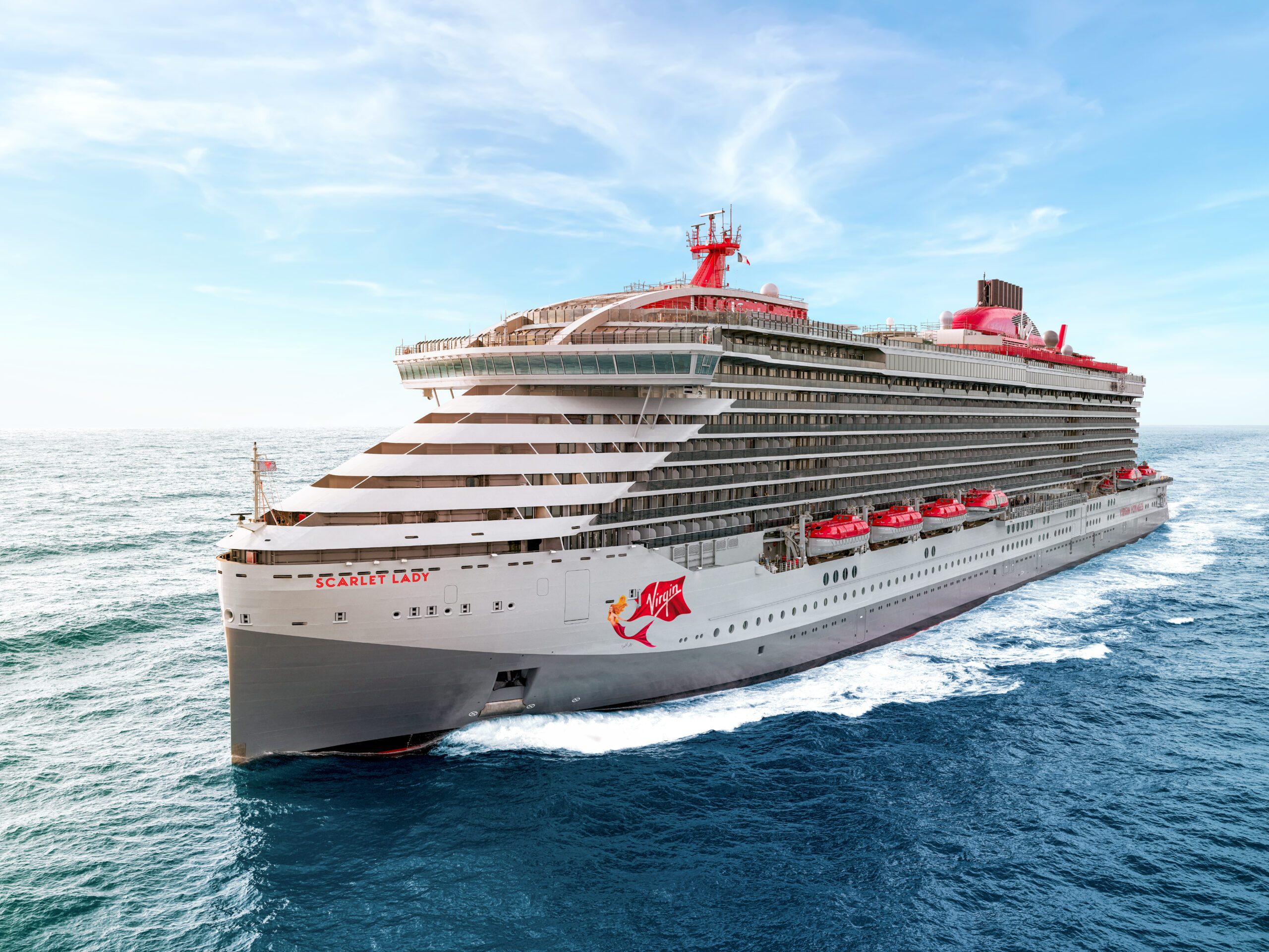Planning a family cruise can be both exciting and overwhelming. One question parents often ask is if their children need passports for the cruise, and the answer is: it depends!
The Fun Cruise Crew is here to clarify passport requirements for children on cruises and offer practical tips for a smooth embarkation process, aiming to alleviate stress caused by missing paperwork and ensuring a hassle-free boarding for your family.
By the end of this post, you will have a better grasp of the necessary documentation and preparation steps, allowing you to focus on creating treasured memories with your family at sea.
Please keep in mind that the information in this article primarily addresses United States citizens. Travelers from other countries should refer to their respective home countries for documentation requirements. The information provided in this article is accurate as of the date of publication. Travel regulations and document requirements are subject to change. It is recommended to verify current entry requirements and document specifications with the relevant authorities before finalizing travel arrangements.
Cruising Within the United States
Closed-Loop Cruises
When going on family cruises within the United States, like an Alaska cruise, children usually do not require a passport. This also holds true for closed-loop cruise itineraries, where the trip begins and ends at the same U.S. port.
These cruises often visit nearby ports of call such as the Caribbean islands, Mexico, or the Bahamas, making documentation requirements simpler. However, each child will still need to show proof of U.S. citizenship.
An example of a closed-loop cruise is this Western Caribbean cruise itinerary on the Carnival Vista:
- Day 1: Depart from Miami
- Day 2: Enjoy a day at sea
- Day 3: Cozumel, Mexico
- Day 4: Grand Cayman
- Day 5: Ocho Rios, Jamaica
- Day 6: Enjoy another day at sea
- Day 7: Return to Miami
Despite visiting different countries, this cruise both starts and begins in the United States, making it a closed-loop cruise.
Acceptable Forms of Identification
- Certified Copy of a Birth Certificate: Must be issued by the city, county, or state of birth.
- U.S. Passport Card: A convenient, wallet-sized alternative to a full U.S. passport book, valid for land and sea travel between the U.S., Canada, Mexico, Bermuda, and the Caribbean.
- Consular Report of Birth Abroad: If the child was born outside the United States to U.S. citizen parents.
- Green card: For children who are not U.S. citizens but are lawful permanent residents, a green card (Permanent Resident Card) will be necessary to re-enter the United States after the cruise.
But Hold On…
While a passport might not be mandatory for closed-loop cruises departing from and returning to the same U.S. port, it’s still a very good idea to have one. Here’s why:
- Unexpected Changes: Severe weather, medical emergencies, or mechanical issues can force your cruise ship to make an unscheduled stop at a foreign port. Having a passport ensures you can disembark and manage unexpected changes without complications or delays in foreign territories.
- Shore Excursions: Many popular shore excursions offered by cruise lines involve travel beyond the U.S. border, even if your cruise itself stays within domestic waters. These excursions often require a passport, so possessing one enables you to fully enjoy your adventures.
- Emergency Situations: In emergencies requiring a return to the U.S. from a foreign port, having a passport facilitates your travel arrangements. This is crucial if you need to return quickly due to personal emergencies like health issues.
- Enhanced Security and Identification: A passport acts as a universally recognized form of identification, streamlining interactions with U.S. Customs and immigration officials at any port of call.
- Future Travel: Owning a passport is a valuable investment for future travel plans. It simplifies spontaneous international trips, as you won’t need to apply for travel documentation each time.
- Travel Documentation Requirements: Certain U.S. territories or Mexican ports may have specific documentation requirements that a passport can easily satisfy.
- Peace of Mind: Carrying a passport provides peace of mind, knowing you have the proper travel documentation to handle various situations that may arise during your cruise, ensuring a worry-free experience.
International Cruises: The Passport is a Must
For international cruises with stops at foreign ports such as the Caribbean islands, destinations in South America, or European cities, obtaining a passport is absolutely essential for every family member, regardless of age. A valid passport is required for all travelers, including infants and young children, to ensure compliance with international travel regulations and to facilitate entry and exit at international borders.

Understanding Visa Requirements for Your Cruise
Visa requirements can vary significantly depending on your cruise destinations. It’s important to research and understand the specific visa requirements for each port of call to avoid any last-minute complications.
For example, U.S. citizens may need a tourist visa to enter countries like Costa Rica or the Czech Republic, even for short visits. Check visa requirements well in advance to ensure you have the necessary documentation for smooth entry.
Conversely, many countries participate in the Visa Waiver Program for U.S. citizens, allowing entry without a visa for stays of 90 days or less, provided certain criteria are met. Familiarizing yourself with these requirements can simplify your cruise experience.
The Fine Print: What to Look Out For
When obtaining passports for children, consider these key factors to ensure a smooth application process and hassle-free travel experience:
- Expiration Dates: Many countries require passports to be valid for at least six months beyond the intended return date. Check expirations to avoid travel disruptions.
- Blank Pages: Make sure your child’s passport has enough blank pages. Some countries require a minimum of two blank pages for visa and entry/exit stamps.
- Different Last Names: If a child’s last name differs from a parent’s, additional documentation, such as a marriage license, may be necessary to establish familial ties.
- Legal Guardians: If a child is traveling with a legal guardian who isn’t a parent, extra documentation, like a court order or notarized letter from the parent, may be required.
Step-by-Step Guide to Obtaining Different Documents
Certified Birth Certificate
To get a certified birth certificate, reach out to the vital records office where your child was born—whether it’s at the city, county, or state level. You can request copies through online, mail, or in-person methods, but keep in mind that costs and processing times can vary, so it’s advisable to ask for this document well ahead of your travel plans.
Here’s a simpler breakdown of the contrast between a standard birth certificate and a certified birth certificate:
Standard Birth Certificate
- This initial record is given from a vital records office right after birth.
- It typically shows essential details like the person’s name, date and place of birth, and sometimes parental names.
- It might lack specific security features and might not be suitable for official purposes such as getting a passport or driver’s license.
Certified Birth Certificate
- This is a verified copy of the original birth record officially issued by the vital records office.
- It comes with an official seal and certification by the registrar and is commonly needed for legal matters, identification, or official paperwork.
- Certified birth certificates are often required for tasks like applying for passports, driver’s licenses, social security benefits, or proving citizenship.
U.S. Passport Card
To apply for a U.S. passport card, you need to complete Form DS-11, gather necessary documents (like proof of citizenship and parental identification), pay the fee, and submit your application in person at a passport acceptance facility. Passport cards are cheaper than passport books and are valid for travel by land and sea to neighboring countries like Canada and Mexico.
Passport cards and passport books have different uses and restrictions:
Passport Card
- Function: A wallet-sized card for land or sea travel between the U.S. and certain neighboring countries, excluding air travel.
- Limitations: Cannot be used for international flights, intended for border crossings by land or sea.
- Cost: Usually more affordable than a passport book.
Passport Book
- Function: The more versatile choice for international travel by air, land, or sea.
- Limitations: Bulkier than a passport card but suitable for all types of international travel.
- Cost: Generally more expensive than a passport card.
If you plan to travel internationally by air, a passport book is essential. For land or sea trips to specific countries, a passport card can be a practical and cost-effective alternative.
Consular Report of Birth Abroad
If your child is born outside the United States and at least one of the parents is a U.S. citizen, you will need to obtain a Consular Report of Birth Abroad (CRBA) to establish the child’s U.S. citizenship.
This document can be obtained by contacting the nearest U.S. embassy or consulate, completing the required forms, and providing documentation of the child’s birth and the parents’ U.S. citizenship.
The CRBA is essential for confirming the child’s U.S. citizenship status and is typically required for obtaining a passport and asserting citizenship rights.
Enhanced Driver’s License as an Alternative
An enhanced driver’s license (EDL) is a type of driver’s license that serves not only as a driver’s license but also as a proof of identity and citizenship for certain border-crossing purposes. It typically includes additional security features and can be used for land and sea travel to and from neighboring countries, such as Canada, Mexico, and some Caribbean countries, in place of a passport.
The specific features and requirements of an enhanced driver’s license can vary depending on the issuing state or country. An Enhanced Driver’s License (EDL) can be used in place of a passport for entry into the United States by land or sea from Canada, Mexico, and some Caribbean countries.
Some of the countries that accept an EDL instead of a passport include:
- Canada
- Mexico
- Bermuda
- The Bahamas
- Caribbean countries participating in the Western Hemisphere Travel Initiative (WHT)
Safety and Care of Passports
When traveling with children, it’s important to ensure the safety and proper handling of their passports. Keeping the passport secure and protected from damage is key. One effective method is to use a travel wallet or a dedicated passport holder, which can be stored in a secure place, such as a parent’s handbag or a locked suitcase.
Additionally, it’s wise to keep a digital copy of the passport on your phone or cloud storage, and a physical photocopy in a separate location from the original document. In the unfortunate event that a passport is lost or stolen while you are in a foreign country, knowing the nearest U.S. embassy or consulate’s location can save time and stress.
U.S. embassies can provide assistance in replacing lost passports and are equipped to help with emergency documentation.
Regulations and Requirements for U.S. Territories
Traveling to U.S. territories such as Puerto Rico and Guam usually involves simpler document requirements for U.S. citizens than foreign destinations. For entry, U.S. citizens typically do not require a passport; a certified birth certificate and a government-issued photo ID are usually all that’s needed.
Understanding and Navigating U.S. Customs
Upon your cruise’s return to the United States, you will be required to go through U.S. Customs procedures. Here is a detailed overview of what to anticipate:
- Prepare Documentation: Ensure you have all necessary travel documents readily available, including proof of citizenship such as a passport or a birth certificate.
- Declare Goods: Be ready to declare any items purchased during your trip abroad. This includes goods you bought during your port visits.
- Inspection Process: Customs officers may conduct inspections on your luggage. It’s important to be transparent and cooperative during this process to facilitate a quick and easy experience. Answer any questions truthfully and follow instructions provided by the customs officials. This honesty and cooperation help in ensuring a smooth customs clearance process.
Prepare for a Seamless Sailing Experience
With proper travel documentation and expert support on hand, you can focus on the excitement of planning your family cruise. We’ll manage the logistics while you anticipate creating unforgettable memories at sea.



